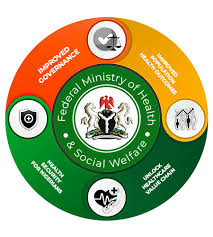
By Lisbeth Micheni, Kenya
The rising tide of heroin addiction is becoming a serious public health concern in Kenya, with communities and authorities grappling with its devastating effects.
According to Boniface Wilunda, Programme Management Officer at the United Nations Office on Drugs and Crime (UNODC), heroin abuse in the country has escalated significantly in recent years, presenting a multifaceted challenge that demands urgent attention.
Wilunda made this revelation recently during a forum on drug control strategies in Nairobi.
He said: “We have what we call the southern route, and this is the longer route from heroin production fields in Afghanistan. Traffickers traffic heroin from Afghanistan, through the East Coast into the Indian Ocean, all the way down to Southern Africa, and then through the West Coast of Africa as they try to reach markets in the Americas and Europe
“The heroin problem in Kenya is not just a health issue; it is a social and economic crisis. It affects not only individuals but also families and communities, particularly in coastal regions like Mombasa and Kilifi, where drug trafficking is most prevalent.”
Kenya’s location along major international drug trafficking routes has exacerbated the problem. Smugglers exploit penetrable borders and weak enforcement mechanisms to funnel drugs into local markets. The result has been a sharp increase in heroin availability, with youth and vulnerable populations bearing the brunt.
Wilunda emphasised the need for a multi-pronged approach to tackle the crisis. “We must enhance border control measures, strengthen rehabilitation programs, and invest in public awareness campaigns. But most importantly, we need to address the root causes, such as unemployment and lack of education, which make our youth susceptible to drug abuse,” he stated.
The statistics paint a grim picture. According to a recent UNODC report, an estimated 18,000 people in Kenya inject heroin, with many more using the drug in other forms. The health implications are critical, ranging from the spread of HIV and hepatitis C due to needle sharing, to a rise in overdose-related deaths.
The Kenyan government, in collaboration with organisations like the UNODC, has initiated harm reduction programs, including needle exchange initiatives and medically assisted therapy. However, these efforts face funding and resource challenges.
“Kenya has made progress in policy formulation, but implementation remains a challenge. Communities must be empowered to support rehabilitation and reintegration of those recovering from addiction,” Wilunda urged.
As heroin addiction continues to erode social structures and strain healthcare systems, experts are calling for a coordinated national response. Wilunda’s call to action underscores the urgency of addressing the crisis before it spirals further out of control.
For many Kenyans, the fight against heroin addiction is not just about saving lives but also restoring hope to communities scarred by the drug’s devastating impact.
categories
recent posts





